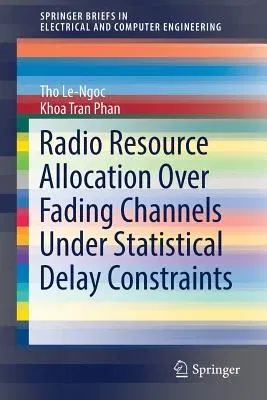This SpringerBrief presents radio resource allocation schemes for
buffer-aided communications systems over fading channels under
statistical delay constraints in terms of upper-bounded average delay or
delay-outage probability.
This Brief starts by considering a source-destination communications
link with data arriving at the source transmission buffer. The first
scenario, the joint optimal data admission control and power allocation
problem for throughput maximization is considered, where the source is
assumed to have a maximum power and an average delay constraints. The
second scenario, optimal power allocation problems for energy harvesting
(EH) communications systems under average delay or delay-outage
constraints are explored, where the EH source harvests random amounts of
energy from renewable energy sources, and stores the harvested energy in
a battery during data transmission. Online resource allocation
algorithms are developed when the statistical knowledge of the random
channel fading, data arrivals, EH processes governing the system
dynamics is unknown a-priori.
This Brief continues with a source-relay-destination communications link
with buffers available at both source and relay, as part of a multi-hop
network. Optimal resource allocation schemes for this 3-node relaying
system to maximize its effective capacity under a delay-outage
constraint are proposed, with special emphasis on relay roles:
Half-duplex (HD) or full-duplex (FD) relay operation. With HD relay, the
adaptive link selection relaying problem jointly with both fixed and
adaptive power allocation schemes is investigated. Within each
transmission frame, either the source-relay link or the
relay-destination link is selected to be active depending on the channel
conditions. With FD relay under the presence of non-zero residual
self-interference (SI).
This Brief also presents source and relay power allocation schemes for
both cases of available knowledge of the channel state information at
transmitter (CSIT): instantaneous or statistical. Professional and
researchers working in this related field and advanced-level students in
electrical or computer engineering will find the content valuable as a
reference.

